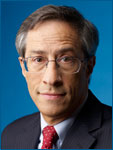WASHINGTON, D.C. — Nasdaq OMX Group and NYSE Euronext have recently held discussions with brokerage firms about installing failsafe mechanisms on their various exchanges to prevent errant trades such as the ones that nearly toppled Knight Capital Group.

“We’re looking at the different things we can do,” Larry Leibowitz, NYSE Euronext chief operating officer, told Traders Magazine. “We understand that we can never anticipate every software or hardware problem. So how do you have a failsafe or catchall that watches out for aberrant behavior?”
After the Knight Capital debacle of August 1, when the firm’s trading algorithms went haywire, resulting in $440 million in losses, brokerage executives have argued that the exchanges need to do more to prevent future disasters. They want the exchanges to cut off a broker’s access to the exchange if it appears its trading is out of control.
The exchanges, for their part, argue the liability of second-guessing the trading intentions of their customers is too great to unilaterally deny a broker access. They contend the information they have is too limited on which to base a decision.
Leibowitz says the talks with the brokers are preliminary and that tough questions remain. “How much discretion do the exchanges have?” he asked. “Do we have the discretion to shut customers off? What would that look like?”
The NYSE executive points out that the new rules governing clearly erroneous trades that were put in place after the ‘Flash Crash’ left the exchanges with very little discretion to bust or adjust trades.
At least one brokerage executive views the talks as a positive step. “We should be looking at this aggressively,” Jon Werts, a managing director in the global execution services division at Bank of America Merrill Lynch, told the audience at the annual Security Traders Association conference in Washington yesterday. “I hope the exchanges end up working together on this. This is something where you don’t need a competitive advantage.”
Werts would like to see a single unified failsafe mechanism across all the exchanges. He argues it would help restore investor confidence in the nation’s securities markets.
“If we can stand here as an industry and say this can never happen again…that these types of safeguards are in place, we will slowly start the process of gaining back the trust that frankly we’ve all lost,” he told the STA crowd.
Nasdaq could not be reached for comment by press time.
Regulators also should look at whether there should be controls in place at stock exchanges as well, Richard Ketchum, the chief executive of the Financial Industry Regulatory Exchange, said. But Ketchum left that to the Securities and Exchange Commission to address.
”Kill switches have to be far more hair-triggered than they have been in the past,’’ he said.



